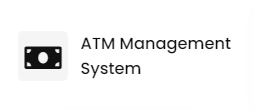Whoa!
I remember the first time I tapped my thumb to log into an exchange and felt like some sci-fi thing had just happened.
It was slick. It felt secure. It also made me a bit nervous, though—my instinct said, “somethin’ about this smells off.”
At first I was thrilled by the convenience, but then I started poking at the edges, thinking about account recovery, device loss, and the ugly little world of social engineering that follows convenience tools like a shadow.
There’s a trade-off here; convenience without thought is a trap, and security without usability is dead on arrival.
Really?
Okay, so check this out—biometrics are not a password; they’re an identifier tied to your device or vendor.
That sounds obvious, but many people treat fingerprint or face unlock as the same thing as a strong password, which it isn’t.
On one hand biometrics reduce friction, yet on the other hand they complicate recovery flows when something goes sideways, especially for platforms operating across borders and different regulatory frameworks, where identity proofs and recovery policies can vary wildly.
This tension is why designs that look seamless can hide very messy account-recovery scenarios down the road.
Hmm…
Here’s what bugs me about a lot of platform implementations: they assume the device is permanent.
They often assume the user will always have the same phone, same biometrics, and that nothing will ever force a reset of identity ties.
Initially I thought standardized biometric templates would solve this across devices, but then I realized vendor locking and different sensor algorithms make portability limited, so when you lose access you can end up stuck in a loop of verification requests, document uploads, and long delays.
That’s not just annoying; for a trader it can mean missed market moves and real financial loss.
Seriously?
Let me be concrete: two things protect you in practice — redundancy and preparedness.
Enroll multiple authentication methods whenever the exchange lets you, and keep backup keys offline.
On the flip side, don’t treat biometrics as your sole fallback; have recovery codes, a hardware security key, and at least one trusted phone number or email with strong protections on their end, because recovery chains are only as strong as their weakest link.
This is the belt-and-suspenders approach; it feels a little old-school, but it’s effective.

Practical Steps for Safer Trading Access (and how to recover if you lose it)
If you use biometric login on any exchange—say when you want a faster upbit login experience—do a quick inventory first.
List your devices. Note which biometrics are enrolled where. Keep printed recovery codes in a locked place.
Also, add a hardware key like a YubiKey as a primary second factor if your platform supports it, because keys are portable, phishable-resistant, and give you something you can physically control, which is a different security model than something intrinsic like a fingerprint that you can’t change.
I’m biased toward hardware security keys because they make account takeovers much harder, though they introduce a single point-of-failure if you don’t back them up properly.
Whoa!
When recovery begins, be deaf to urgency and patient with process.
If you lose your device, don’t panic and post about it on social media; those posts give attackers a map.
Instead, follow the platform’s official recovery steps, be ready to upload ID documents when required, and expect delays—legitimate platforms will want to verify identity carefully and that’s a good thing, though it can feel bureaucratic.
Keep receipts and timestamps for any interactions with support; it helps if you get passed between reps.
Really?
Phishing is the silent killer here.
A biometric prompt can be spoofed by a malevolent app or a phishing site that overlays a legit-looking modal, so always check the app origin and the URL, and never approve prompts blindly.
My instinct said this early on, and I’ve seen cases where people tap to approve for “security” and inadvertently approve a session for an attacker—so watch notifications and be skeptical of inbound prompts that ask you to reauthenticate out of the blue.
Heads-up: browser and app permissions matter—don’t grant more than you need.
Hmm…
Regulation matters too, and for US-based traders or those using exchanges with US touchpoints, KYC and privacy rules shape recovery.
Some jurisdictions allow biometrics to be used in specific ways, while others limit retention or sharing of biometric templates, which affects how platforms design their flows and how you can expect to regain access if biometrics fail.
On one hand privacy-friendly rules reduce vendor lock-in; on the other hand they can make cross-border recovery harder because an exchange may not be able to “push” your biometric template from device A to device B.
That means planning ahead—export backup keys, store recovery phrases in hardware wallets or secured offline, and understand your chosen platform’s policy before you rely on biometrics as a primary auth method.
Okay, quick checklist before you enroll anything:
– Use a hardware key and store one backup key in a secure place.
– Save recovery codes in two physically separate locations.
– Register biometrics, but don’t make them your only method.
– Lock your SIM with a PIN and add port-out protections with your carrier.
– Maintain a password manager with a strong master password (very very important).
These are simple steps but they pay off.
FAQ
What if I lose my phone with biometric login enabled?
Start by using any backup authentication methods you set up — hardware key, backup codes, or a secondary device. Contact the exchange via official support channels and be ready to provide identity verification. Don’t reuse a compromised phone or SIM without wiping and securing it first.
Are biometrics enough to protect my funds?
Biometrics increase convenience and layer of defense, but they aren’t foolproof. Pair them with hardware keys, strong passwords, and safe recovery practices to get real security. Think multiple independent factors rather than a single silver bullet.
How should I store recovery codes?
Print them, laminate if you want, and store them in a safe or a bank deposit box if the amounts justify it. Don’t store plain recovery codes in cloud notes or photos—those are easily compromised. Also, update stored locations when you change devices.




















